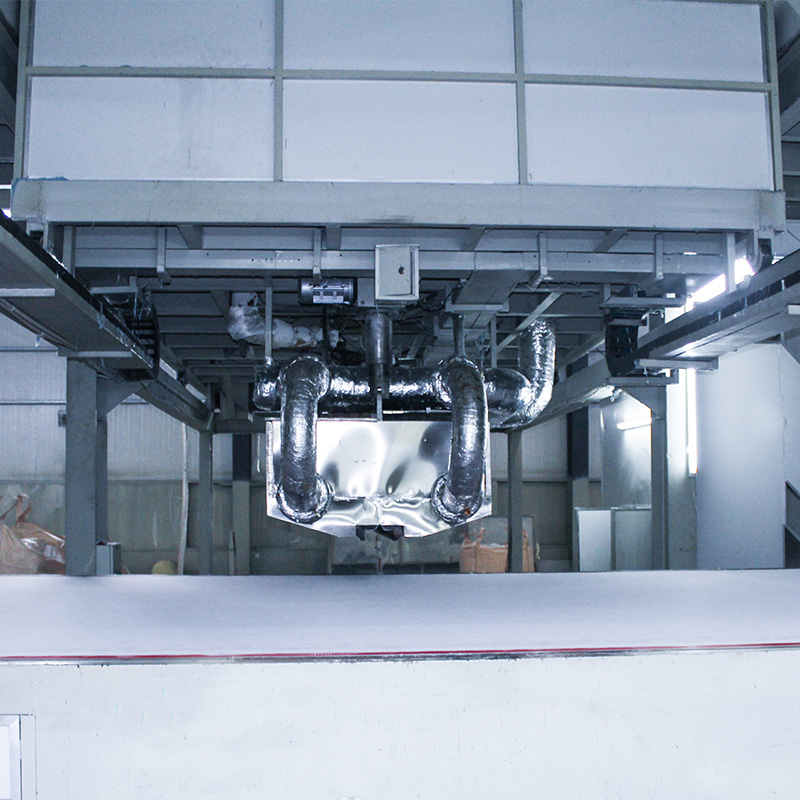The melt blown nonwoven machine stands as a marvel of modern engineering. This specialized equipment is not just about extruding fine fibers; it’s about precision, innovation, and adaptability in design. For manufacturers looking to elevate their production capabilities, understanding the intricacies of advanced machine design—especially components like the die head and temperature control systems—is crucial. Let’s dive into what makes these machines tick and how they shape the future of melt-blown fabric manufacturing.
At the heart of every melt-blown system lies the die head , a component that plays a pivotal role in determining the uniformity and quality of the final product. The die head is responsible for extruding molten polymer through tiny nozzles, creating ultra-fine fibers with diameters as small as 1.6–4 microns. But here’s the catch: achieving consistent fiber distribution requires meticulous attention to detail. Factors such as nozzle spacing, hole size, and alignment must be optimized to prevent clogging or uneven filament formation. For instance, single-row nozzle configurations are often preferred for lightweight fabrics used in medical masks, while multi-row setups may be better suited for heavier applications like industrial filtration. By fine-tuning these elements, operators can ensure that the melt-blown process delivers fabrics with superior filtration efficiency and softness—qualities that make this material indispensable across industries.
Equally important is the role of temperature and airflow control systems in shaping the properties of melt-blown nonwovens. These systems work hand-in-hand to influence everything from fiber diameter to fabric loftiness. Imagine trying to create a breathable yet highly efficient filter medium without precise thermal management—it would be nearly impossible! During the extrusion phase, maintaining an optimal temperature ensures that the polymer flows smoothly through the nozzles, preventing degradation and ensuring consistent output. Meanwhile, hot air velocity directly impacts the loftiness of the fabric by controlling how far apart the fibers are spaced during deposition. Too little airflow might result in dense but stiff materials, whereas excessive airflow could lead to overly porous fabrics with compromised barrier properties. Striking the right balance is key to producing versatile products tailored to specific needs, whether it’s crafting soft, elastic textiles for hygiene products or robust filtration media for HVAC systems.

Beyond the technical aspects, one cannot overlook the broader implications of investing in cutting-edge melt-blown machinery. As demand for high-quality nonwoven fabrics continues to surge—driven by sectors ranging from healthcare to environmental protection—the need for reliable and efficient production solutions becomes ever more pressing. A well-designed melt blown machine not only enhances productivity but also opens doors to customization, allowing manufacturers to experiment with different raw materials, weights, and finishes. From polypropylene variants with enhanced melt flow indices (MFI) to innovative additives that boost hydrophobicity or flame resistance, the possibilities are virtually limitless.
In conclusion, mastering the art of melt-blown nonwoven production begins with understanding the sophisticated interplay between machine design and operational parameters. Whether you’re focused on perfecting the die head technology or optimizing temperature controls, every decision influences the end product’s performance. So, if you’re ready to take your fabric manufacturing to the next level, consider exploring the latest advancements in melt blown nonwoven machine technology. With the right tools and expertise, you’ll be well-equipped to meet the growing demands of today’s dynamic market—and perhaps even redefine what’s possible in the world of nonwoven textiles.







 English
English 中文简体
中文简体 русский
русский عربى
عربى





